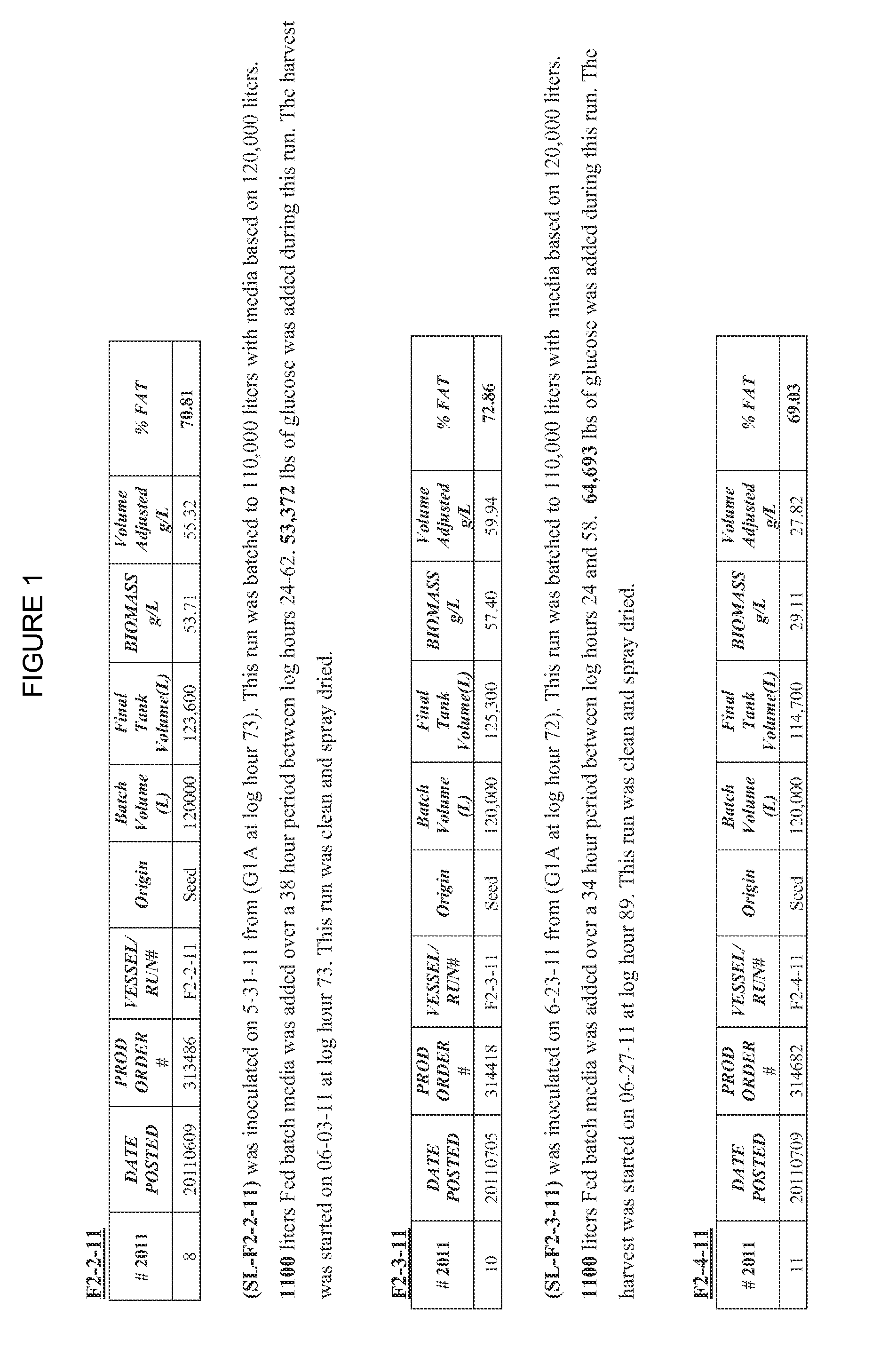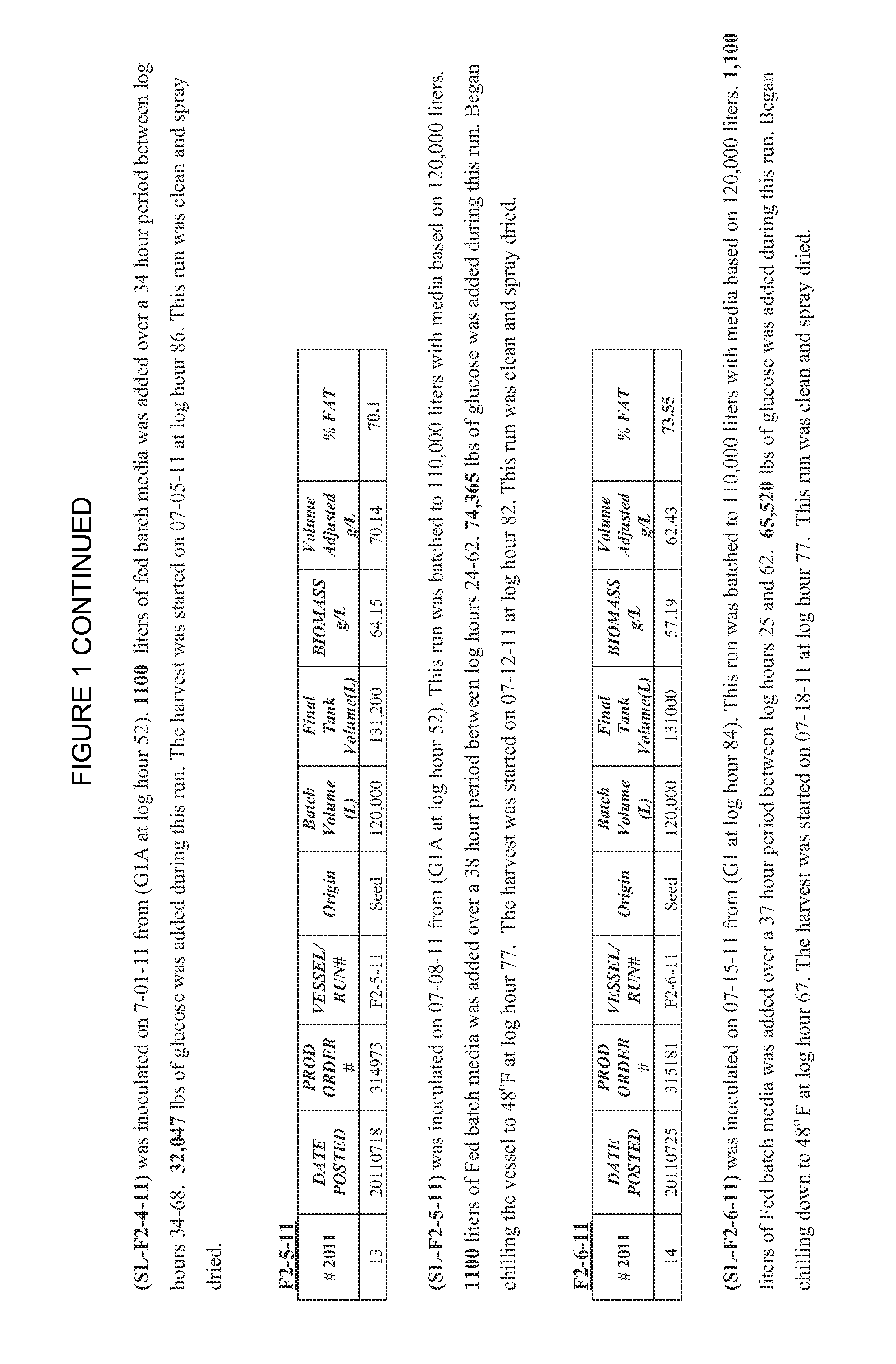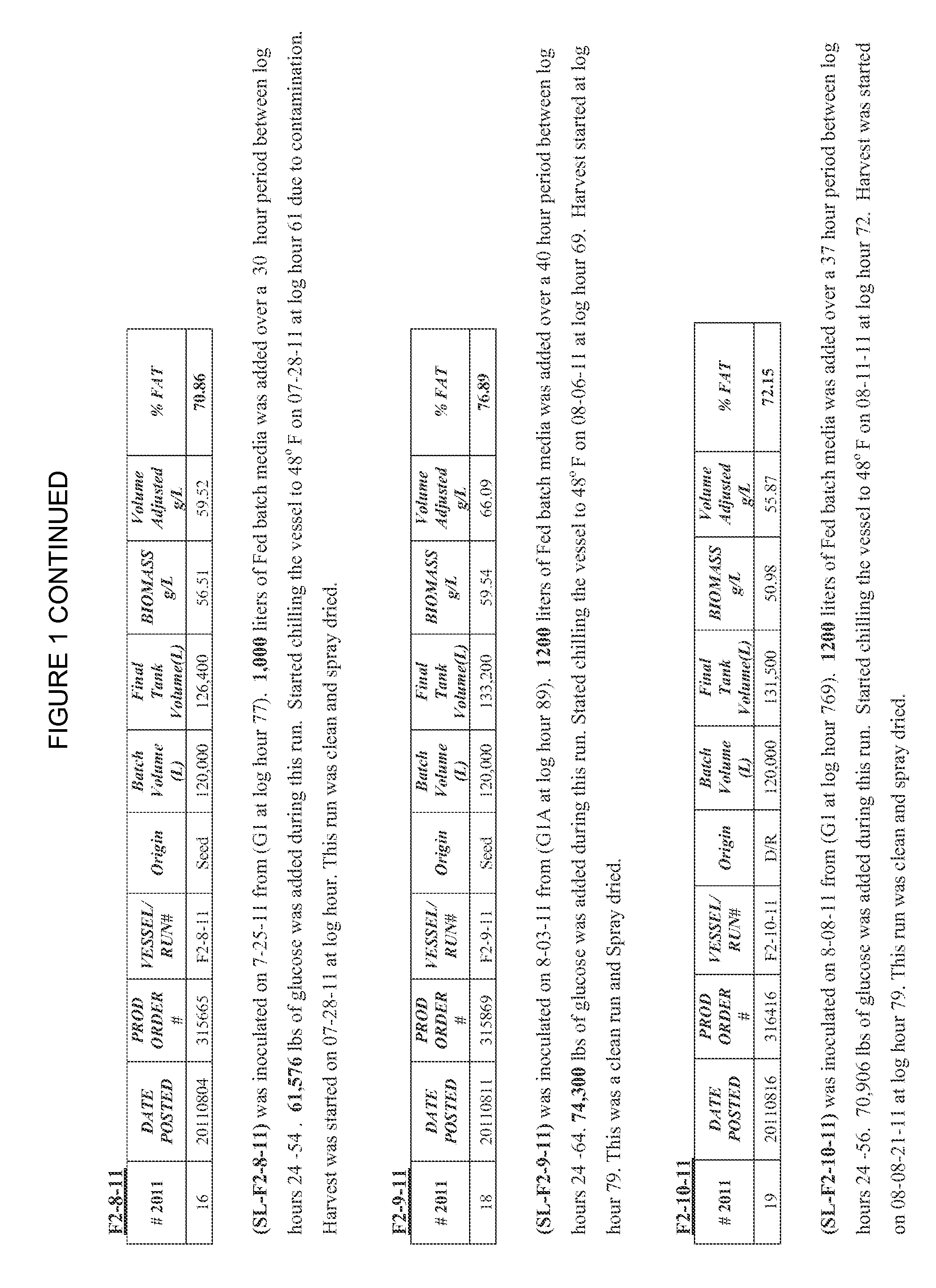Algal lipid compositions and methods of preparing and utilizing the same
a technology of algal lipids and compositions, applied in the field of algae with high lipid content, can solve the problems of long time-consuming animals, high cost, and difficulty in commercial production of algae biofuels, and achieve the effect of high fat conten
- Summary
- Abstract
- Description
- Claims
- Application Information
AI Technical Summary
Benefits of technology
Problems solved by technology
Method used
Image
Examples
example 1
Growth of High Fat Algal Biomass
[0130]Experiments were conducted during development of embodiments of the invention in order to characterize and establish methods for heterotrophic algae production, and in particular, methods of culturing algae in order to generate an algal biomass containing high fat / lipid levels. A series of conventional heterotrophic algae production studies was performed and run in batch.
[0131]A culture of Schizochytrium limacinum was obtained and stored in 1.5 mL cryovials at −80 C. For each experiment, the process was started by thawing cryovials and aseptically adding to 1.0 L shake flasks of with media. Media in the 1 L flasks contained 50 g / L sugar, 10 g / L yeast extract, and 4 g / L sea salt. Three liters of 3 to 6 day old shake flask culture was used to inoculate a 250 L vessel containing media, grown for 24-48 hours, and then transferred to a main vessel (17,000 to 28,000 L) and run as a batch process for 36 to 72 hours. The temperature of the batch runs wa...
example 2
Large Scale Production of High Fat Algal Biomass
[0138]The initial attempts to generate a heterotrophic algal biomass described in Example 1 above utilized procedures based on yeast fermentation processes. The processes were run in batch due to limitations in the production facility (Nicholasville, Ky.) and temperatures that could only be controlled between 25 and 30 C. The temperature range was large due to lack of precise control of the system. As indicated in Table 1, above, the fat levels achieved at the Nicholasville, Ky. plant ranged from 8-38%. However, as indicated above, additional experiments were carried out during development of embodiments of the invention that provided the identification of certain ratios / amounts of substrates that could be utilized during heterotrophic algal biomass production to alter algal growth and biomass generation / properties. Modification of the levels and ratios of the media (e.g., MgSO4, Urea, CaCl2, MgCl2, and KH2PO4) during fermentation was ...
example 3
Biomass Harvesting
[0153]Experiments conducted during development of embodiments of the invention identified that the increased total fat levels in the biomass caused significant problems with regard to centrifugation of the algal biomass. Recovery of biomass content post-centrifugation ranged from only about 45-85% total biomass weight. This is shown, for example, in Table 13 below:
TABLE 13Comparison of Fat and Protein yield from directharvest sample versus spray dried product.VolProtein %Fat %adjustedProtein %% recoveryFat %(sprayMoisture %Run(harvestBiomass(harvestfrom(spray drieddriedspray driednumbersample)(g / L)sample)centrifugeproduct)Product)productF1-2-1160.7*86.2NANA75.711.661.47F1-3-1169.6486.4NA5570.2516.471.37F1-4-1174.7666.5NA6771.5615.922.11F1-5-1173.1270.816.146865.6517.142.43F1-6-1162.77**45.7NA8954.813.352.14F2-1-1172.5950.916.298765.8917.642.72F2-2-1170.8159.512.585266.4915.292.15*bad harvest sample** process control problems with this batchF1-2-11 Had a batch volum...
PUM
| Property | Measurement | Unit |
|---|---|---|
| Fraction | aaaaa | aaaaa |
| Fraction | aaaaa | aaaaa |
| Time | aaaaa | aaaaa |
Abstract
Description
Claims
Application Information
 Login to View More
Login to View More - R&D
- Intellectual Property
- Life Sciences
- Materials
- Tech Scout
- Unparalleled Data Quality
- Higher Quality Content
- 60% Fewer Hallucinations
Browse by: Latest US Patents, China's latest patents, Technical Efficacy Thesaurus, Application Domain, Technology Topic, Popular Technical Reports.
© 2025 PatSnap. All rights reserved.Legal|Privacy policy|Modern Slavery Act Transparency Statement|Sitemap|About US| Contact US: help@patsnap.com



